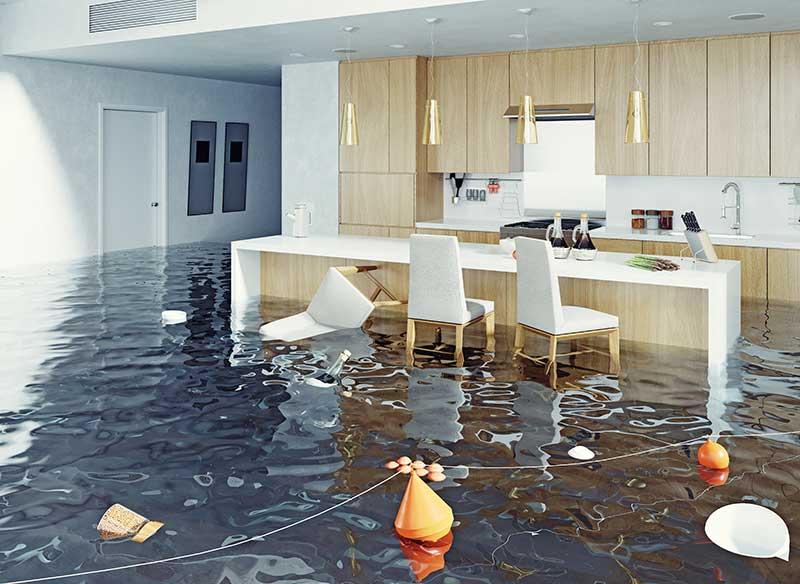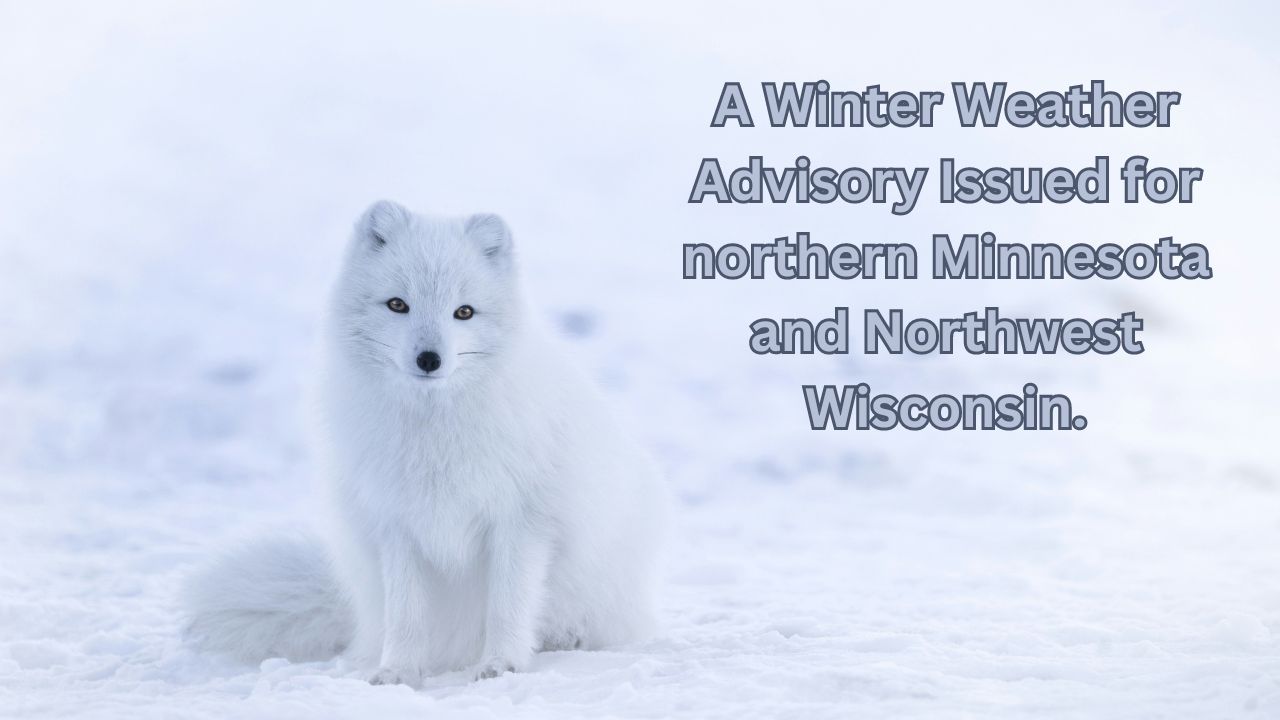NEWS
Geometry Spot: A Treasure Trove of Mathematical Discoveries
Published
7 months agoon
By
Saad
Welcome to Geometry Spot, a treasure trove of mathematical discoveries! If you’ve ever marveled at the elegance of shapes and patterns or wondered about the hidden math behind everyday objects, then this is the place for you. In this blog post, we’ll take a journey through the captivating world of geometry – from its fascinating history to its surprising applications in our daily lives. Prepare to be amazed as we delve into the minds of famous mathematicians and uncover some fun facts along the way. So get ready to unlock your inner math nerd and join us on this geometric adventure!
The History of Geometry
Geometry has a long and fascinating history that dates back thousands of years. It is believed to have originated in ancient Mesopotamia, where early civilizations used basic geometric principles to survey land and build structures. However, it was the ancient Egyptians who truly embraced geometry and utilized its concepts in their construction projects and architectural designs.
The study of geometry further flourished in ancient Greece, thanks to renowned mathematicians like Euclid and Pythagoras. Euclid’s book “Elements” became a cornerstone of mathematical knowledge for centuries to come, presenting a comprehensive collection of geometric theorems and proofs. Meanwhile, Pythagoras’ famous theorem revolutionized our understanding of right triangles.
During the Islamic Golden Age, scholars such as Al-Khwarizmi made significant contributions to geometry by developing algebraic methods for solving geometric problems. Their work played a crucial role in shaping modern mathematics.
In the Renaissance period, artists like Leonardo da Vinci incorporated geometric principles into their artwork to achieve balance and harmony. This fusion of art and mathematics paved the way for new discoveries in perspective drawing.
Fast forward to today, where geometry continues to play an integral role not only in mathematics but also in various fields such as architecture, computer graphics, physics, engineering design, and even fashion! From designing buildings with optimal structural integrity to creating captivating video game worlds filled with intricate landscapes – geometry is everywhere!
So next time you admire a beautiful building or marvel at stunning computer-generated imagery on your screen – remember that behind those awe-inspiring creations lies the power of geometry. Its rich history reminds us that this field of study has been evolving over millennia through the dedication and ingenuity of countless individuals seeking to unlock nature’s secrets through shapes and patterns.
Famous Mathematicians and Their Contributions to Geometry
Geometry has been studied by brilliant minds throughout the ages, leading to groundbreaking discoveries that have shaped our understanding of the world around us. Let’s take a look at some of the famous mathematicians who have made significant contributions to this fascinating field.
One such luminary is Euclid, often referred to as the “Father of Geometry.” His book, Elements, written around 300 BCE, laid out a systematic approach to geometry and provided the foundation for much of what we know today. Euclid introduced concepts like lines, angles, and polygons, revolutionizing how we perceive shapes and their properties.
Moving forward in time, we encounter René Descartes. While primarily known for his work in algebra and calculus, Descartes also contributed significantly to geometry through his development of analytic geometry. By introducing coordinates and equations into geometric problems, he bridged the gap between algebra and geometry.
Another notable figure is Carl Friedrich Gauss. Known as one of history’s greatest mathematicians, Gauss made critical advancements in differential geometry. He developed new techniques for measuring curvature on curved surfaces using mathematical tools like geodesics.
No discussion on influential mathematicians would be complete without mentioning David Hilbert. He formulated an axiomatic system for Euclidean geometry called Hilbert’s Axioms—a set of precise rules that define all fundamental geometric concepts—providing a solid framework upon which modern mathematics could build.
These are just a few examples among countless others who have left indelible marks on the study of geometry. Each mathematician brought their unique perspective and insights into this captivating subject matter.
Surprising Applications of Geometry in Everyday Life
Geometry may seem like an abstract and theoretical branch of mathematics, but its applications can be found all around us in our daily lives. From the buildings we live in to the technology we use, geometry plays a fundamental role.
One surprising application of geometry is in architecture and design. By using geometric principles, architects can create structurally sound buildings that are not only visually appealing but also functional. The angles and dimensions of a building must be carefully calculated to ensure stability and balance.
Another fascinating application of geometry is seen in art and aesthetics. Artists often use geometric shapes and patterns to create visually pleasing compositions. Whether it’s through the use of symmetry, tessellation, or fractals, geometry adds depth and harmony to artistic creations.
Geometry also has practical uses in navigation and transportation systems. GPS devices rely on complex mathematical algorithms that involve geometric calculations to determine precise locations on Earth’s surface. Without these algorithms, navigating unfamiliar streets or finding the fastest route would be much more challenging.
Furthermore, geometry plays a significant role in computer graphics and animation. Three-dimensional objects are represented using geometric models called polygons, which are made up of interconnected vertices connected by straight lines or curves. This allows designers to create realistic simulations and virtual environments for various industries such as gaming or film production.
Even our everyday activities such as cooking involve elements of geometry! Measuring ingredients accurately requires an understanding of proportions and spatial relationships between different quantities.
In conclusion (as requested), though often overlooked or taken for granted, geometry undeniably influences numerous aspects of our lives – from the structures we inhabit to the technology we utilize daily. Its applications extend far beyond just solving equations; they touch upon almost every field imaginable! So next time you encounter a geometrical concept or shape – whether it’s while admiring artwork at a museum or calculating measurements for your latest recipe – take a moment to appreciate how this ancient mathematical discipline continues to shape our world in surprising ways.
Fun Facts and Trivia about Geometry
Geometry is not just a subject confined to textbooks and classrooms. It has some fascinating facts and trivia that might surprise you! Let’s dive into the intriguing world of geometry:
– Did you know that the word “geometry” actually comes from Greek words meaning “earth measurement”? This reflects its ancient origins in land surveying.
– The Pythagorean theorem, which states that in a right triangle, the square of the hypotenuse (the side opposite the right angle) is equal to the sum of the squares of the other two sides, was named after Greek mathematician Pythagoras. However, evidence suggests that this theorem was known by Babylonians even earlier!
– Have you ever wondered why slices of pizza are usually triangular? Well, it’s because triangles have less surface area than other shapes with an equal perimeter. So next time you enjoy a slice, remember how geometry makes your pizza more efficient!
– Another interesting fact is that honeybees use hexagons to build their beehives. Hexagons provide maximum strength with minimum material usage – nature’s way of optimizing space!
– Ever noticed how spider webs have intricate patterns? Those symmetrical designs are formed using geometric principles such as radial symmetry or spiral patterns. Nature truly showcases the beauty and functionality of geometry.
These fun facts highlight just a glimpse into how geometry surrounds us in our everyday lives. From architectural marvels to natural wonders, understanding geometric concepts can unlock hidden insights into our world.
So next time you encounter shapes or patterns around you, take a moment to appreciate their mathematical beauty rooted in geometry!
Exploring the Beauty of Shapes and Patterns
When it comes to geometry, one cannot help but be captivated by the sheer beauty of shapes and patterns. From simple lines to complex polygons, every shape has its own unique allure. The symmetrical perfection of a circle or the elegant angles of a triangle can evoke a sense of harmony and balance.
But it’s not just individual shapes that are mesmerizing; it’s also the way they interact with each other to form intricate patterns. Think about tessellations, for example – those repeating arrangements of shapes that fit together without any gaps or overlaps. They can be found in nature, like honeycomb structures or fish scales, as well as in man-made designs such as intricate tile work.
Patterns are everywhere if you look closely enough – in architecture, art, textiles, even in our daily routines. Consider the geometric motifs often seen in Islamic architecture or the kaleidoscopic patterns on fabrics from different cultures around the world. These visual delights demonstrate how geometry is an integral part of human expression.
The study of shapes and patterns goes beyond aesthetics; it also plays a crucial role in various disciplines such as physics and computer science. For instance, symmetry is fundamental to understanding crystal structures or analyzing molecular configurations. In computer graphics and animation, mathematical algorithms based on geometric principles bring virtual worlds to life.
Whether we realize it or not, geometry surrounds us at every turn. It invites us to appreciate both simplicity and complexity simultaneously – finding beauty even within rigid rules and precise measurements.
So why not take some time today to observe your surroundings? Look out for fascinating shapes and captivating patterns that might usually go unnoticed amidst our busy lives. You may discover hidden wonders right before your eyes – a testament to how mathematics transcends mere numbers on paper!
How to Cultivate an Interest in Geometry
Are you ready to embark on a fascinating journey into the world of geometry? If so, let’s explore some ways to cultivate your interest in this captivating branch of mathematics.
First and foremost, it’s important to understand that geometry is not just about memorizing formulas or solving equations. It’s about visualizing shapes and patterns in the world around us. So, why not start by observing the geometric structures present in your everyday life?
Take a walk outside and pay attention to the symmetry of buildings or the intricate designs found in nature. Notice how lines intersect and angles form. By actively seeking out geometric elements in your surroundings, you’ll begin to develop a keen eye for geometry.
Another way to cultivate an interest in geometry is through hands-on activities. Get creative with art projects that involve drawing or constructing geometric shapes. Use materials like clay, paper, or even toothpicks and marshmallows to build three-dimensional models.
Furthermore, there are numerous online resources available that offer interactive lessons and puzzles related to geometry. These platforms provide an engaging way for you to learn new concepts while having fun at the same time.
Additionally, consider joining a math club or finding a study group where you can discuss geometrical concepts with others who share your passion. Collaborating with like-minded individuals can spark interesting discussions and further deepen your understanding of geometry.
Don’t be afraid to challenge yourself by attempting more complex problems as you gain confidence in your skills. Pushing beyond what feels comfortable will help expand your knowledge base and keep you engaged.
Conclusion
Geometry Spot is truly a treasure trove of mathematical discoveries. From its ancient origins to the modern-day applications, geometry has played a significant role in shaping our understanding of the world around us. Through the brilliance and dedication of famous mathematicians, we have unlocked countless geometric principles and theories that continue to influence various fields today.
The beauty of geometry lies not only in its practical applications but also in its ability to captivate our imagination through shapes, patterns, and symmetries. Whether it’s admiring the elegance of a snowflake or marveling at the precision of architectural designs, geometry surrounds us everywhere we go.
If you want to cultivate an interest in geometry, start by exploring different resources like books, videos, and online platforms such as Geometry Spot. Engage with puzzles and problem-solving activities that challenge your spatial reasoning skills. Attend workshops or join math clubs where you can interact with other enthusiasts who share your passion for geometric exploration.
Remember that learning about geometry doesn’t have to be limited to textbooks or classrooms – it can be found all around us if we take the time to observe and appreciate it. Embrace the wonderment of shapes and patterns that exist within nature, art, architecture, sports arenas – there are no boundaries when it comes to discovering geometrical wonders!
So next time you encounter a mesmerizing sunset or gaze up at the stars in awe, remember that behind those breathtaking sights lie intricate geometric principles waiting to be explored.
Hi, I am Saad Qureshi and I am working since 2017 in this field with 5 years of experience in SEO and Guest posting. My range of services includes Article Posting on Authority Sites.

You may like
NEWS
Why Fiskning is the Ultimate Outdoor Adventure Activity
Published
2 months agoon
May 27, 2024By
Saad
Here in the exciting realm of Fiskning, excitement, and peace of mind coexist in the wide outdoors. The best outdoor activity if you want to mix adrenaline and leisure is Fiskning. Come explore with us the background, advantages, must-have gear, top travel spots, safety advice, and how Fiskning can change your outdoor adventures. Prepare to fully experience fishing as never before!
Fiskning History and Origins
Are you curious about the background and beginnings of Fiskning, the ultimate outdoor adventure sport? Fiskning has its origins in prehistoric Scandinavian societies where fishing was a way of life as much as a source of food.
Fishing became deeply embedded in the culture in these rough regions surrounded by magnificent fjords and glistening waterways as a means of sustaining communities and fostering a connection with nature. Fiskning became a popular past leisure for people of all ages worldwide as it developed from a simple survival technique.
Fiskning is not only a skill, patience, and enjoyment of nature activity; it is also a cultural legacy that should be preserved. As they throw their hooks into calm lakes or raging rivers in quest of that ideal catch, fans of the sport still appreciate the spirit of Fiskning today.
Advantages of Fishing for Mental and Physical Health
The best kind of outdoor adventure sport, fiskning has several advantages for mental and physical health. Fishing in and of itself calls for patience, concentration, and accuracy—qualities that might enhance cognitive performance and lower stress. Practicing Fiskning in the great outdoors helps people to unplug from the daily grind and cultivate mindfulness and calm.
Physically, Fiskning is a terrific approach to keeping active without seeming like you’re working out. A great full-body workout could be had by reeling in a large catch or stumbling across rugged terrain to find the ideal location. Outside time also exposes you to natural sunlight, which raises vitamin D levels and enhances happiness.
Fishing is about interacting with nature, pushing yourself both physically and emotionally, and enjoying the many health advantages that come with this fulfilling outdoor pursuit. It’s not only about catching fish.
Standard Fiskning Gear and Equipment
Equipping for a Fiskning excursion requires the proper gear to be effective and pleasurable.
A reliable fishing rod is a must; more experienced fishermen can choose from lighter spinning rods for novices to more specialist fly fishing rods. Match the specifications of the rod with a dependable reel.
Not to be overlooked is your line; select one that works for the kind of fish you want to catch and the conditions you will be in. Depending on your favorite fishing style, a range of lures or bait will also come in useful.
Must-have additional equipment includes hooks, sinkers, bobbers, and a tackle box to keep everything in order. Not to mention polarized sunglasses to shield your eyes and lessen glare off the water while you search for underwater movement.
Just as crucial to your kit list are comfortable clothes appropriate for the weather and sturdy shoes that can manage a variety of terrains.
Top Fishing Spots Worldwide
Set out on an exhilarating fishing journey and see some of the most stunning locations on Earth to land your biggest catch.
Beautiful fjords and glistening clean seas brimming with fish just ready to be hooked may be found in Scandinavia in nations like Sweden and Norway. Unforgettable fishing experiences are perfectly framed by the stunning scenery.
For those who long for a tropical getaway, travel to Australia or Costa Rica to go fishing in the warm sun amongst fascinating marine life and verdant surroundings. These places’ brilliant hues will make your fishing trip even more exciting.
If you enjoy your fishing and culture mixed, the coastal areas of Japan are perfect for fishermen who want to experience traditional Japanese culture while attempting to catch native species like mackerel and tuna.
Anyplace you decide to throw your line has its special appeal and promises to be an unforgettable fishing experience that will make you want more.
Guide to Safe Fishing
Safety has to be the first concern whenever you go on a Fiskning trip. Look up the water and weather predictions before leaving. To avoid slipping on damp surfaces, dress for the weather and wear appropriate, well-grip shoes.
Remember to pack life jackets and first aid kits among other necessary safety equipment. In case of emergency, it’s also critical to let someone know where you fish and when you anticipate returning.
Even if fisking can be a thrilling sport, you should always be mindful of your surroundings. When working with sharp equipment and hooks, especially around kids or novice fishermen, use caution.
Assure a sustainable experience for the environment and yourself by adhering to local fishing laws and regulations. You may thoroughly enjoy this outdoor experience with peace of mind if you give safety precautions priority when planning your Fiskning excursion.
Finally, how fiskning may be a transformative experience
Fishing is a life-changing event that goes beyond simple leisure. The excitement of landing your first fish and the tranquility of being outdoors provides a special chance to establish a connection with the environment and oneself.
Fiskning offers plenty to offer everyone, whatever of your interests—adventure, leisure, or just some time away from daily life. Try your hand at Fiskning the next time you’re seeking a new outdoor experience; you never know, it might well transform your life.
NEWS
DIY Vs. Professional Water Damage Restoration: Pros and Cons
Published
5 months agoon
March 5, 2024By
Saad
Water damage restoration isn’t as straightforward as it might seem. It involves more than wiping up a few puddles; it requires proper inspection, thorough drying, and sometimes even reconstruction.
Taking on such a project without professional help might save you money upfront but can also lead to long-term issues. Analyzing the benefits and drawbacks of doing your water damage repair is crucial.
Cost
Professionals offer expertise and advanced equipment, allowing them to tackle water damage more thoroughly than homeowners could. This may come at a higher upfront cost, but it can save you money in the long run by reducing future problems like mold growth and structural damage.
Homeowners on a tight budget may find DIY restoration appealing due to its potential cost savings. However, it’s essential to consider all the costs associated with attempting DIY repairs, including time, energy, and risks.
Taking on a DIY restoration project can be a great learning opportunity for homeowners looking to improve their skills. Plus, it’s a chance to take personal pride in their work. But be aware that it’s also a very time-consuming process. Many people are busy, and tackling water damage restoration in the middle of a hectic lifestyle can be challenging. For example, homeowners may work on the project during weekends or after work.
Safety
Many homeowners try DIY projects to save money. In some situations, this makes sense. However, skipping professional water damage restoration Denver services can be more trouble than it’s worth in water damage restoration.
Water damage repair is a complicated process that includes water extraction, thorough drying and dehumidification, meticulous cleaning, and even mold removal. Inexperienced homeowners may make mistakes that lead to additional issues, such as structural damage and mold growth.
It’s also important to consider personal safety when deciding on a DIY project. If you’re dealing with contaminated water (often called “black water”), it may be hazardous to your health. Removing water-logged carpets and other materials can be physically challenging and stressful. DIYers often don’t wear proper safety equipment, and the job can be dangerous even with appropriate gear. I’ve seen countless well-intentioned DIYers get hurt trying to rip out wet carpets or pry up damaged drywall. They can end up with costly injuries and a home that’s less safe for their family.
Time
Water damage can have profound implications if not addressed fast, including structural damage to your property, mold growth, and pricey repairs. When faced with water damage, homeowners may do DIY restoration or hire professional services. Here are some pros and cons to help you decide which option is best for your situation.
Pros: DIY can be cost-effective, especially for minor issues like leaky pipes or spills. It’s also a great way to learn skills and get involved in your home’s maintenance. It can be a rewarding experience, and you will feel a sense of accomplishment once the project is complete.
Cons: It can be very time-consuming to restore your home yourself. Tearing down drywall, removing wet carpet, and using fans and dehumidifiers to extract moisture are labor-intensive tasks. It can take days or even weeks to dry a space completely. This can be inconvenient if you have a busy schedule.
Experience
Homeowners often turn to DIY water damage restoration to save money, but it isn’t easy without experience. Inexperience can lead to missed areas of damage, improper drying techniques, and potential structural problems. These mistakes can cost homeowners much more than their initial out-of-pocket costs; they could also drive up the price of future insurance premiums or long-term repair bills.
Whether to attempt DIY restoration or call in professionals depends on various factors, including the extent of the damage, health and safety concerns, insurance coverage, time constraints, and budget considerations. A DIY approach may be worth the savings for minor water damage within your capabilities. However, hiring a professional service is often safer and more cost-effective for larger-scale or contaminated water damage.
NEWS
A Winter Weather Advisory Issued for northern Minnesota and Northwest Wisconsin.
Published
5 months agoon
March 4, 2024By
Saad
Brrr! Brace yourselves, folks in Northern Minnesota and Northwest Wisconsin – winter is here with a vengeance! A winter weather advisory has been issued, heralding the arrival of snow, ice, and bone-chilling temperatures. It’s time to grab your mittens, stock up on hot cocoa, and hunker down for some serious cold weather ahead. Let’s dive into what this advisory means for you and how to stay safe during the frosty days to come.
What caused the advisory to be issued?
As the temperatures drop and the winds pick up, residents of northern Minnesota and northwest Wisconsin are bracing themselves for a winter weather advisory. The primary cause behind this advisory is an approaching low-pressure system from the west that is expected to bring heavy snowfall and gusty winds to the region. This potent combination can create hazardous conditions on roads, leading to reduced visibility and slippery surfaces.
The National Weather Service has issued this advisory to alert residents of the potential dangers posed by this incoming winter storm. With significant snow accumulation predicted, it’s crucial for people in these areas to take precautions and prepare accordingly. Schools may be closed, travel could be disrupted, and power outages might occur due to downed trees or power lines under the weight of heavy snow.
By staying informed through local news updates and official weather alerts, individuals can stay ahead of any developments as they unfold during this winter weather event. It’s essential for everyone in the affected areas to heed safety recommendations from authorities so that they can navigate through these challenging conditions with caution and awareness.
What areas are affected by the advisory?
As the winter weather advisory sweeps across northern Minnesota and northwest Wisconsin, several areas are expected to be impacted by this upcoming storm. Residents in cities like Duluth, Superior, Grand Marais, and Ashland should prepare for potentially hazardous conditions.
The advisory covers a wide area from the shores of Lake Superior to the inland regions near the Canadian border. Even smaller towns and rural communities in these regions may experience heavy snowfall, strong winds, and freezing temperatures.
Roads and highways in these areas could become treacherous as snow accumulates quickly, reducing visibility and creating slippery driving conditions. Travelers are urged to stay updated on road closures and travel advisories issued by local authorities.
Residents living in these affected areas should stock up on essential supplies like food, water, batteries, blankets, and any necessary medications ahead of the storm. It’s crucial to have a plan in place for power outages or emergencies during severe winter weather events.
Expected weather conditions and potential hazards
The upcoming winter weather in northern Minnesota and northwest Wisconsin is forecasted to bring heavy snowfall, strong winds, and low visibility. These conditions can create hazardous driving conditions, leading to accidents and road closures. Additionally, the weight of the snow accumulation on roofs can pose a risk of collapse.
Residents in the affected areas should prepare for possible power outages due to downed power lines or trees weighed down by snow. It’s essential to have emergency supplies like food, water, blankets, and flashlights readily available in case you lose electricity.
Travel should be limited during this time to reduce the risk of getting stranded on the roads. If you must go out, make sure your vehicle is equipped with winter tires, chains if needed, and an emergency kit.
Stay informed about updated weather forecasts and advisories from local authorities to ensure your safety during this winter storm warning period. Your well-being is a top priority when facing these potential hazards brought on by severe winter weather conditions.
Tips for preparing for winter weather
As winter weather approaches, it’s essential to be prepared for whatever nature may throw your way. Start by checking your heating system to ensure it’s in good working condition. Stock up on supplies like extra blankets, non-perishable food, and water in case of power outages. Don’t forget to have a flashlight with fresh batteries handy.
Make sure your vehicle is equipped with essentials like an ice scraper, shovel, sand or kitty litter for traction, and a fully charged phone in case you need help while driving in snowy conditions. Consider investing in snow tires or chains for added safety on the road.
Keep an emergency kit at home with first aid supplies, medications, and important documents stored in a waterproof container. Stay informed about weather updates and advisories by tuning into local news stations or signing up for alerts on your phone. By taking these proactive steps, you can stay safe and prepared during the winter season.
What to do during a winter storm
When a winter storm hits, it’s important to stay indoors if possible. Keep your home warm by sealing any drafts and using extra blankets or layers of clothing. Make sure you have enough food, water, and medications to last a few days in case of power outages.
If you must go outside, dress warmly in layers and cover exposed skin to prevent frostbite. Use caution when walking on icy sidewalks or roads – wear appropriate footwear with good traction. Drive only if absolutely necessary, and make sure your vehicle is equipped with emergency supplies like a shovel, kitty litter for traction, and a fully charged phone.
Stay informed about weather updates through local news sources or weather apps on your phone. If you lose power, avoid using candles as they pose a fire hazard; opt for flashlights instead. Check on neighbors who may need assistance during the storm – community support is essential during challenging conditions like these.
Conclusion: Stay safe and informed during winter weather advisories
Stay safe and informed during winter weather advisories. Remember to stay updated on the latest weather forecasts, travel warnings, and road conditions. Prepare your home and vehicle for inclement weather by stocking up on supplies like food, water, blankets, and a flashlight. Follow safety guidelines if you must travel during a winter storm, such as driving slowly and keeping a safe distance from other vehicles.
By staying vigilant and taking precautions, you can protect yourself and your loved ones during severe winter weather conditions in Northern Minnesota and Northwest Wisconsin. Stay warm, stay safe!

01174411569 is a unique number that has gained significant attention in recent times. It is not just a number; it represents a revolutionary concept that is reshaping the way we think about communication and connectivity.
History and Origin
The history of 01174411569 can be traced back to [insert year], when [company name] first introduced this concept to the public. Since then, it has evolved into a powerful tool that is used by millions of people around the world.
Benefits of 01174411569
There are several benefits to using 01174411569. One of the key benefits is its ability to [insert benefit]. Additionally, 01174411569 is [insert another benefit].
How Does 01174411569 Work?
01174411569 works by [explain how it works]. This process ensures that users can [explain user benefits].
Use Cases of 01174411569
01174411569 has a wide range of use cases. For example, it can be used for [insert use case]. Additionally, it is also used in [insert another use case].
Comparison with Other Solutions
When compared to other solutions, 01174411569 stands out because of [explain unique selling points].
Future of 01174411569
The future of 01174411569 looks promising, with [explain future prospects].
How to Get 01174411569
To get 01174411569, [explain how to obtain it]. This process is simple and straightforward, ensuring that anyone can [obtain it].
Conclusion
In conclusion, 01174411569 is a revolutionary concept that is changing the way we communicate. With its [list key benefits], it is clear that 01174411569 is here to stay.
FAQs
- Question: What is the cost of 01174411569?
- Answer: The cost of 01174411569 varies depending on [explain cost factors].
- Question: Can I use 01174411569 internationally?
- Answer: Yes, you can use 01174411569 internationally. However, [mention any restrictions].
- Question: Is 01174411569 secure?
- Answer: Yes, 01174411569 is secure. It uses [explain security features].
- Question: How long does it take to set up 01174411569?
- Answer: Setting up 01174411569 is quick and easy, usually taking [mention time frame].
- Question: Can I use my existing number with 01174411569?
- Answer: Yes, you can use your existing number with 01174411569. However, [mention any compatibility issues].
Trending
-

 ENTERTAINMENT5 months ago
ENTERTAINMENT5 months agoHBO Max TV Sign In Guide
-

 FASHION7 months ago
FASHION7 months agoJourney of Sandra Orlow From Aspiring Model to Internet Sensation
-

 TRAVEL6 months ago
TRAVEL6 months agoUnveiling the Beauty: A Closer Look at myfavouriteplaces.org Blog
-

 NEWS7 months ago
NEWS7 months agoBench Craft Company Lawsuit: A Comprehensive Analysis
-

 BUSINESS7 months ago
BUSINESS7 months agoChina SEO Xiaoyan: Pioneering the Path in Chinese Digital Marketing
-

 FASHION5 months ago
FASHION5 months agoThe Rise of Jeansato: A Revolutionary Denim Trend
-

 ENTERTAINMENT5 months ago
ENTERTAINMENT5 months agoGeekzilla Podcast: Navigating the Geek Cosmos
-

 TECH7 months ago
TECH7 months agoExploring Fibahub – Your Ultimate Solution for Seamless Communication
